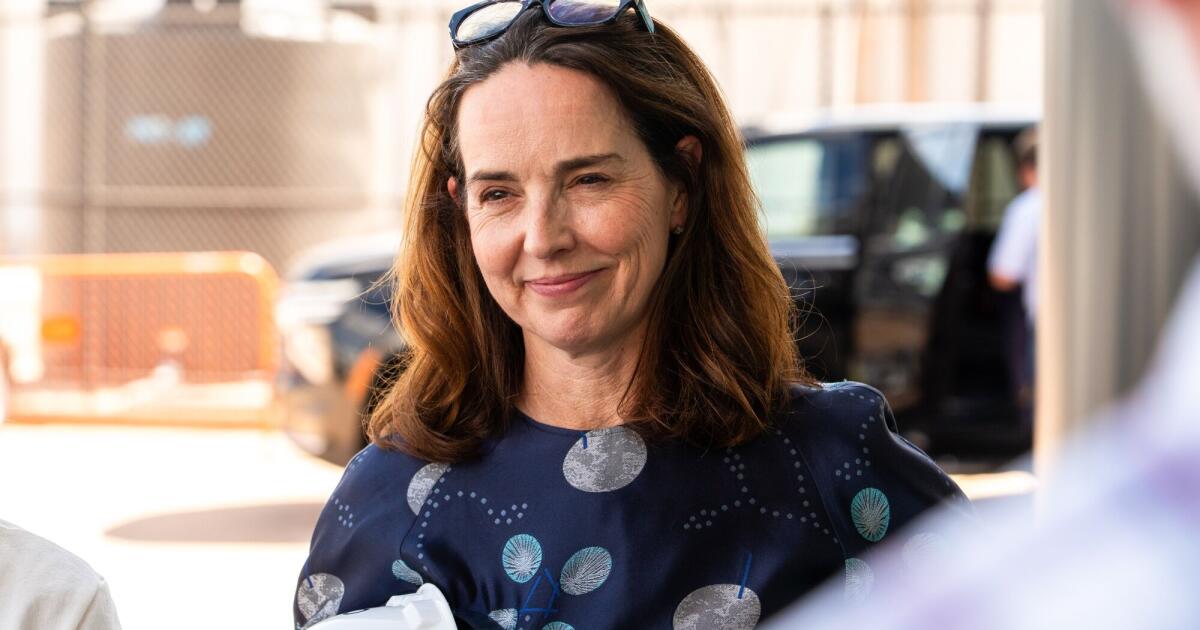Copyright Los Angeles Times

In late 2024, OpenAI, still recovering from the aftershock of the brief, messy ousting of Sam Altman, initiated what it hoped would be a relatively straightforward process of converting to a more traditional for-profit business that would be more appealing to investors. Then came the pushback. Elon Musk, an OpenAI co-founder who left and launched a rival startup, sued to block the restructuring, alleging it violated the company’s founding principles. The billionaire also made an unsuccessful bid to buy the nonprofit that controls OpenAI. Former OpenAI employees and nonprofit leaders asked regulators to stop it, too. Meanwhile, OpenAI spent months locked in complex negotiations with its biggest backer, Microsoft, about how their partnership would change with the new corporate entity. On Tuesday, roughly a year after starting the process, OpenAI said it had completed the restructuring after signing a new pact with Microsoft and making concessions to state regulators tasked with reviewing the deal, in what Delaware State Attorney General Kathy Jennings described as “a long and intensive negotiation.” While OpenAI made compromises to get it done, the restructure is a decisive win that will pave the way for a new era of heightened investment in data centers, chips and talent to support AI development. OpenAI has already committed to spending $1.4 trillion on infrastructure for AI, Altman said during a livestreamed event on Tuesday, and he expects to continue moving aggressively on that front. To finance that, OpenAI will need to raise unprecedented amounts of capital through venture funding, debt and an eventual public offering, the last of which Altman said remains the most likely path for the company. SoftBank, one of OpenAI’s biggest backers, had reserved the right to pull back billions in funding if OpenAI did not complete the restructure in the next few months. Other investors may also have balked at cutting large checks to a company whose nonprofit structure complicated their financial returns. “We’re finally almost just Normal Co., what I’ve been calling it internally,” OpenAI Chief Financial Officer Sarah Friar said in an on-stage interview Wednesday at a conference in Riyadh. The moves announced this week allow OpenAI to “continue to raise capital in a much less complex way,” she said. But while OpenAI is eager to turn the page to a new chapter, many unanswered questions remain about the relationship between the nonprofit and for-profit. That includes the key issue of how much the former will be able to exert influence over the latter. In theory, the nonprofit board can exercise control by hiring or firing members of the for-profit board. Practically speaking, however, firing OpenAI’s for-profit directors may prove difficult — at least for the moment — given that all but one of the nonprofit board members also serve on the for-profit board. Two of the current nonprofit board members, Adam D’Angelo and chairman Bret Taylor, currently run AI businesses that use OpenAI’s software. Nonprofit board members also do not have the power to fire executives at OpenAI’s for profit business, according to two people familiar with the matter, who spoke on condition of anonymity to discuss internal matters. That’s a crucial detail, considering it was a different, smaller version of the nonprofit board that fired Altman two years ago, kicking off chaos at the company. “The current arrangement still fails to guarantee true independence or accountability to the public,” said Orson Aguilar, CEO of nonprofit LatinoProsperity, which is part of a coalition called EyesOnOpenAI that has led efforts to campaign against the restructuring. “We still have major concerns in terms of who’s in charge.” It’s also unclear how the nonprofit will wield its considerable resources. It’s set to receive a 26% equity stake in the company, or about $130 billion at OpenAI’s current $500 billion valuation, as well as a warrant that entitles it to an undisclosed amount of additional shares if the for-profit’s share price grows more than tenfold after 15 years. To start, the nonprofit said it plans to spend $25 billion on AI that can help health as well as efforts to minimize AI’s most severe risks. But it has yet to name a CEO or any personnel. “What we have now is the ability to actually deploy capital relatively quickly, and the structure before was not conducive to that at all,” OpenAI nonprofit board member Zico Kolter told me on Tuesday. “The setup is quite a bit more aligned now in terms of ensuring the nonprofit benefits from the value that OpenAI is creating.” Kolter is the lone nonprofit board director who will no longer serve as a voting member of the for-profit board, but rather just an observer. (Another will be added to that list within a year of the restructuring.) He also chairs OpenAI’s Safety and Security Committee, which has the authority to delay the company’s product releases if deemed unsafe. “We want to ensure that the processes and the high standards that we hold ourselves to, that OpenAI holds themselves to when it comes to models, are in fact being realized,” Kolter said. “And when they are not, that we either catch it early or we react to it quickly.” OpenAI’s relationship with Microsoft, which was foundational to the AI startup’s early success, remains complicated, too. While Microsoft has agreed to a 27% stake in OpenAI’s new for-profit entity, it’s less clear how exactly the companies will determine the software giant’s ongoing access to OpenAI’s intellectual property. OpenAI said an independent panel will play a key role by deciding when the company has reached artificial general intelligence, a more powerful form of AI that many tech companies are trying to develop. When that happens, Microsoft will no longer be entitled to 20% of OpenAI’s revenue nor will OpenAI have to provide Microsoft access to its latest AI research methods. However, it’s murky how this panel will be selected and agreed upon by both companies, or what their criteria will be. In the meantime, it remains to be seen how Microsoft – increasingly a competitor with OpenAI – will use its access to OpenAI’s IP, including for things like data center and chip design, for its own benefit.Finally, Musk shows no signs of giving up his fight against the restructure, even if that means having to undo it after the fact. “They steamrolled ahead, defying the Judge’s wish that the legality of this be fairly decided by a jury not by politicians,” Marc Toberoff, Musk’s lead attorney on the OpenAI case, told Bloomberg News. OpenAI, he said, “can hardly be heard to complain about the hardships of unwinding.”



